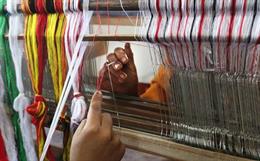Introduction
SmartTextile is developing an internationally acknowledge centre for innovation,development, design and production of the next generation's textile. The goalis to operate a dynamic innovation system; smart textiles to promote growthstrengthen the international position and create new job opportunities in theregion.
Smarttextiles are no longer a science-fiction fantasy. For example: there are in themarket self cleaning carpets, memory shaped and environment responsivetextiles, and anti-insomniac micro fibers.
Nature& Properties
Asthe name suggest, smart textiles, which can sense or stimuli the environmentalcondition. But there is some substantive difference between smart &intelligent textile. Smart textiles or materials can be defined as thematerials & structures which have sense or can sense the environmentalcondition or stimuli whereas intelligent textile can be defined as textilestructures which not only can sense but can also react & respond toenvironmental condition or stimuli. These stimuli as well as response could bemechanical, thermal, electric, magnetic or from other source. According to themanner of reaction, smart textiles can be divided in to four categories:
- Passive Smart Textiles: which can only sense the environmental condition & stimuli,
- Active Smart Textiles: which sense and react to the condition or stimuli,
- Very Smart Textiles: which can sense, react & adapt themselves accordingly, and
- Intelligent Textiles: which are those capable of responding or activated to perform a function in a manual pre-programmed manner.
SmartFabrics are one which can change or react automatically to their surroundings.These are being developed to be able or sense what is happening to the weareror its immediate surroundings. For example, it may help to know the capabilitywhen the wearer's heart rate spikes or drops. Gore-Tex can also be consideredas an example of smart fabric because of its material properties to let wateror moisture flow in one direction and not the other. Nanotechnologies such ascarbon nanotubes or fireproof treatments or combination of electronics &conductive fabrics for sensing a person vital signs, can also be considered assome modern type of smart fabrics. Example: Zephyr technology bioharness whichcan be built into a shirt or bra strap. Biological monitoring technology hasalso been updated by mainstream consumers in the form of the Numetrex Adidasheart rate monitoring garments, which combine with smart fabrics with advancedknitting technologies.
Working
Nowthe question arises, how does a smart textile work. We have some sort ofstimulated arrangement of sensors calibrated with electronic devices help tosense, process & activate the signal in well manner. The sensors provide anerve system to detect signals. The processor analyses & evaluates thesignals. The actuators act upon the detected & evaluated signal eitherdirectly or from a central control unit.
Application
Application of smart clothing will include healthcare & telemedicine, military, police, and emergency service equipment, entertainment, sports & leisure, and fashion wear. It can also be found in the materials which sense how much light to absorb, textiles that measure pulse & immune systems, gloves with microphones, sensors in mattresses, cooling clothes, warming articles of clothing with, & reinforcing concrete.
Area of Research & Development:
- Photosensitive Materials
- Fiber Optics
- Conductive Polymers
- Thermal Sensitive Material
- Shape Memory Materials
- Intelligent Coating Materials
- Chemical Responsive Materials
- Micro-Capsules
- Micro and Nano Materials
- Bio Mimics
References:
- &sec=article&uinfo=<%=server.URLEncode(3109)%>" target="_blank">http://en.wikipedia.org/wiki/Smart_textiles
- &sec=article&uinfo=<%=server.URLEncode(3109)%>" target="_blank">http://smartextiles.co.uk/overview/smart-materials/
- &sec=article&uinfo=<%=server.URLEncode(3109)%>" target="_blank">http://www.smarttextiles.se/index.php/en/about
- &sec=article&uinfo=<%=server.URLEncode(3109)%>">www.ualberta.ca/~jag3/smart_textiles/
- &sec=article&uinfo=<%=server.URLEncode(3109)%>" target="_blank">http://www.wired.com/gadgetlab/2010/06/gallery-smart-textiles/
- &sec=article&uinfo=<%=server.URLEncode(3109)%>" target="_blank">http://www.photonicslabs.com/Assets/downloads/smarttextiles.pdf
Image Courtesy: http://www.zdnet.co.uk







